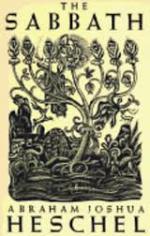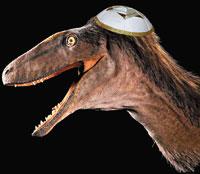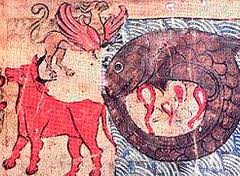By Rabbi Linda Joseph
The Australian heat was over 130 degrees in one of those hottest-days-on-record. The synagogue had no air conditioning and the ceiling fans whirred softly in the background. The small sanctuary was full of heated bodies. Light shone through the ribboned stain glass windows at the front. I was dressed in a red and white gingham pinafore and a white shirt with matching gingham buttons (don’t judge, that was stylish in the 70’s) which I had sweat through before the service even began.
I knew the service really well and felt fairly confidant as we were almost weekly attendees at Temple. The rabbi (who I adored and studied with privately) had encouraged my tutor not to have me chant Torah or Haftarah. He said I did not have the voice for it but instead had encouraged me to study the text deeply with him. The rabbi also could not find my Torah portion and I read from a different section of the Torah. To this day I do not know what I exactly read on my Bat Mitzvah, but it did end somewhere near the final verses of Mishpatim. My mother had made her regular chocolate and vanilla slab cake for the Oneg Shabbat and I am pretty sure there was fruit and dip.
As I re-enter again the week of the anniversary of my Torah portion, I think of all the things which made my Bat Mitzvah memorable in my mind. I reminisce about the family time spent in synagogue before and beyond Bar/Bat Mitzvah. I value the love of Judaism that was instilled into my every day, my Sabbath observance and Jewish holy days. I think of the warmth of relationships and community which inspired me to keep Judaism in my life which eventually led to my becoming a rabbi.
I wonder, what will my Bar and Bat Mitzvah students recall as they look back on their Bnai Mitzvah? What are the treasured details that will stick out for them? What will inspire them to continue on the explorations that this Jewish journey can take them?
Will they have fond memories of studying the service and chanting of scripture with their individual tutor? Will they recall the fun their families had studying their portion with them, and the laughter and struggle around creating a Davar Torah presentation with me? Their Mitzvah project? Their time in the Temple Youth Group? Will they remember the meditation and family blessing in my office before the prayer service? Will they think about the shtick that I bring on to the Bima during my Bar/Bat Mitzvah charge? Will they treasure the wimple they made for their Torah portion? Or the letter they wrote two years before the day about their hopes and dreams for their Bar/Bat Mitzvah? Will they feel nostalgia at being blessed in front of the open Ark? Or fondness for the Wegman’s cookies, that more often than not are bought for Oneg by our families?
And then I pause, because in many ways I think my synagogue is on the right trajectory in the measures and experimentations that the URJ Bnai Mitzvah Revolution encourages. There is relationship, creativity, family involvement, a rabbi who knows their name, a compelling program and teacher in the years following, services that are enjoyable.
I ask myself, on this journey with these families, how much of their Jewish identity is shaped alone by what I do as a rabbi, or the tutor, or their teachers, or my synagogue which prides itself on being a warm house of friends?
There is another half of the equation which made my Bat Mitzvah and Judaism so meaningful to me. It was my family’s commitment to being Jewish not just for their 13 year old’s “event” but in the everyday as a lifelong endeavor. This week, at an Education Committee meeting, a thoughtful and expressive parent said to me: “It is so hard to justify to my kids why they need to attend synagogue and do Jewish things, when other Jewish parents do not demand it of their children.”
Rabbi Jonathon Omer-man, whose son I once tutored for Bar Mitzvah, used to say to me – Judaism is not a religion for children. One of the questions we need to be asking in the Bnai Mitzvah revolution, is how, when it is not already, do we make Judaism relevant to parents that they wish to pass on more than a cultural legacy to their children?. How do we touch our adults in such a way that they prioritize Jewish-being for themselves and their families when they have, for whatever reason, found themselves estranged or distanced or apathetic to Judaism? How do we encourage them to be our partners, to model, as our synagogues model, the vibrancy and importance of Jewish life?
Indulge me in one more Bat Mitzvah memory. My Bat Mitzvah ended with a luncheon for family and friends in our backyard. The first thing we kids, and many adults did in the heat, was put on a swim suit and jump in the pool to cool down. But that was not the end really. The love my family had for Judaism and Jewish life never cooled down. My Bat Mitzvah was successful not because of revolutionary ideas alone, but because it was part of an evolution, a family and synagogue joint venture, that makes me and my brother committed to Jewish life today.
Let’s not call just for a Bnai Mitzvah revolution. Let us demand a Jewish adult revolution. So that the majority of our children are shown the pathway to a Judaism of meaning for their lives and the generations to come.







